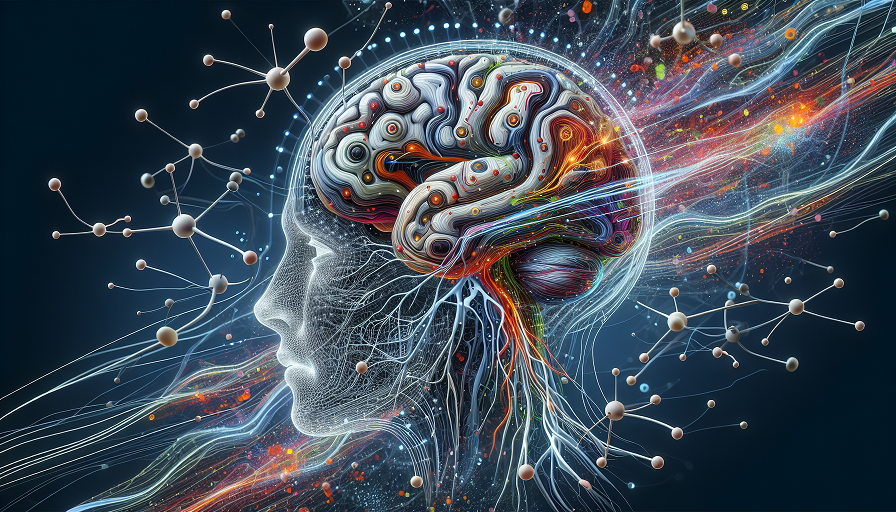
Neuroplasticity, the brain’s ability to adapt and rewire itself, has revolutionized our understanding of cognitive science. Once thought to be a fixed organ, the brain is now recognized as a dynamic and malleable structure, capable of profound change throughout life. From recovering after injury to acquiring new skills, neuroplasticity lies at the heart of these processes. In this article, we’ll delve into key studies that demonstrate the power of neuroplasticity, exploring how science has proven its impact on learning, memory, and rehabilitation.
Contents
What Is Neuroplasticity?
Neuroplasticity refers to the brain’s capacity to reorganize its neural networks in response to experiences, environmental changes, or damage. This adaptability occurs through two primary mechanisms:
- Functional Plasticity: The brain’s ability to move functions from damaged areas to healthy regions.
- Structural Plasticity: The physical changes in the brain’s neural networks, including the formation of new synapses or the strengthening of existing ones.
These processes form the foundation of learning, memory, and recovery, and they are supported by decades of research. Let’s explore some groundbreaking studies that prove neuroplasticity works.
Key Studies on Neuroplasticity
The London Taxi Driver Study
One of the most famous studies on neuroplasticity examined the brains of London taxi drivers, a group renowned for their extensive knowledge of the city’s streets. Conducted by Dr. Eleanor Maguire and her team in 2000, this study used MRI scans to compare the hippocampi of London taxi drivers with those of control subjects.
The results revealed that taxi drivers had larger posterior hippocampi, a region of the brain associated with spatial navigation and memory. Furthermore, the size of the hippocampus was positively correlated with the number of years spent driving taxis. This study demonstrated that the brain could structurally adapt to the demands of acquiring and using spatial knowledge.
Neuroplasticity in Stroke Recovery
A groundbreaking study by Edward Taub and his colleagues in the 1990s introduced Constraint-Induced Movement Therapy (CIMT) for stroke patients. CIMT involves restricting the use of a patient’s unaffected limb, forcing them to use the affected limb. This approach encourages the brain to rewire itself and improve motor function.
Patients undergoing CIMT showed significant improvements in motor skills and functional independence, even years after their strokes. Brain imaging revealed increased activity in the motor cortex, demonstrating that neuroplasticity can aid in recovery even long after an injury.
The Impact of Meditation on Brain Plasticity
In a 2011 study published in the journal Psychiatry Research: Neuroimaging, researchers led by Sara Lazar investigated how mindfulness meditation impacts brain structure. Participants completed an eight-week mindfulness-based stress reduction (MBSR) program, and MRI scans were conducted before and after the intervention.
The study found increased gray matter density in the hippocampus (linked to learning and memory) and other areas associated with emotional regulation. This research proved that mindfulness meditation can promote structural changes in the brain, enhancing its adaptability and resilience.
The Role of BDNF in Learning and Memory
Brain-derived neurotrophic factor (BDNF) is a protein that supports the survival and growth of neurons. A study by Gomez-Pinilla et al. in 2008 explored the connection between exercise, BDNF, and neuroplasticity. The researchers found that regular physical activity increased BDNF levels in the hippocampus, improving learning and memory in animal models.
This study highlighted the critical role of BDNF in promoting synaptic plasticity and demonstrated how lifestyle factors like exercise can enhance neuroplasticity.
Neuroplasticity in Language Learning
In a 2012 study, researchers at Lund University in Sweden examined how learning a new language affects the brain. Participants included military recruits undergoing intensive language training and a control group. MRI scans revealed that the recruits experienced growth in brain regions associated with language processing, including the hippocampus and cerebral cortex.
This study provided compelling evidence that the brain can structurally adapt in response to learning new skills, even within a short timeframe.
Neuroplasticity in Blind Individuals
Research on blind individuals has demonstrated how the brain can adapt to sensory loss. A study published in Nature in 1996 by Sadato et al. revealed that the visual cortex of blind participants became activated during tactile tasks such as reading Braille. This phenomenon, known as cross-modal plasticity, shows how the brain can repurpose regions to process information from other senses.
This finding underscores the brain’s incredible ability to adapt and reorganize itself when faced with sensory deficits.
Music and Brain Plasticity
A 2014 study published in Frontiers in Human Neuroscience explored the impact of musical training on neuroplasticity. The research showed that musicians had increased connectivity between brain regions involved in motor control, auditory processing, and memory.
Furthermore, individuals who began musical training early in life exhibited the most significant changes, suggesting that the timing and intensity of practice play a crucial role in brain plasticity.
Applications of Neuroplasticity in Daily Life
These studies demonstrate that neuroplasticity is not just a theoretical concept — it has real-world applications that can improve learning, recovery, and overall brain health. Here’s how you can apply the principles of neuroplasticity in your daily life:
- Learn New Skills: Engage in activities like learning a new language, playing an instrument, or solving puzzles to stimulate your brain.
- Exercise Regularly: Physical activity boosts BDNF levels, enhancing synaptic plasticity and cognitive function.
- Practice Mindfulness: Meditation and mindfulness exercises promote structural changes in brain areas related to attention and emotional regulation.
- Challenge Yourself: Step out of your comfort zone by trying unfamiliar tasks, which encourages the formation of new neural pathways.
- Maintain a Healthy Lifestyle: Prioritize sleep, eat a brain-friendly diet, and manage stress to support optimal brain health.
The Power of Neuroplasticity
The studies highlighted above prove that neuroplasticity is a fundamental feature of the human brain, enabling it to adapt, learn, and recover in extraordinary ways. Whether it’s recovering from injury, mastering a new skill, or improving emotional resilience, neuroplasticity provides the foundation for growth and change.
By understanding and harnessing the power of neuroplasticity, we can unlock the brain’s full potential, improve cognitive health, and lead more adaptable, fulfilling lives. The next time you challenge yourself to learn something new or overcome a setback, remember: your brain is always ready to grow and adapt.

